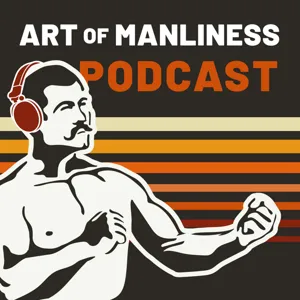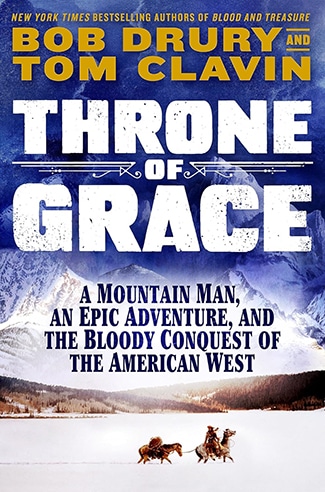Podcast Summary
Sir Arthur Conan Doyle's experiences and influences shaped Sherlock Holmes: Sir Arthur Conan Doyle's medical education, Victorian culture, and literary influences contributed to the creation of Sherlock Holmes, an iconic detective character that continues to captivate audiences worldwide.
The creation of the iconic detective, Sherlock Holmes, by Sir Arthur Conan Doyle, was influenced by his experiences in medical school under a renowned diagnostician, the culture of Victorian England, and the works of literary greats like Charles Dickens and Edgar Allan Poe. Conan Doyle, who had a knack for storytelling from a young age, wrote pioneering works in various genres but it was Sherlock Holmes that captured the global imagination and continues to be reinterpreted. The origins of this iconic character can be traced back to Conan Doyle's era, upbringing, and psyche. He discovered his skill for writing at boarding schools and wrote stories to entertain his classmates. The creation of Sherlock Holmes was not out of grand ambitions but a simple love for storytelling.
Meeting Dr. Joseph Bell inspires Sherlock Holmes: Sir Arthur Conan Doyle's experiences as a doctor and his encounter with diagnostician Dr. Joseph Bell influenced the creation of Sherlock Holmes, blending scientific observation with intrigue for the paranormal.
Sir Arthur Conan Doyle's experiences as a doctor significantly influenced his writing, particularly in the creation of his iconic character Sherlock Holmes. At a pivotal moment in his life, Doyle met the legendary diagnostician Dr. Joseph Bell in Edinburgh. Bell's diagnostic skills, which involved observing patients' physical signs and behaviors, left a profound impact on Doyle. He later incorporated these techniques into the character of Sherlock Holmes. Doyle's passion for both science and the paranormal also contributed to his writing. Despite his strong belief in evidence and justice, he was also intrigued by the spiritualist world, even believing in fairies. These contrasting interests added depth to his works. Overall, Doyle's medical background and experiences shaped his writing in profound ways, resulting in the creation of one of the most beloved and enduring literary characters in history.
Doctor Conan Doyle's Influence from Medical Era on Detective Stories: Conan Doyle's experiences as a doctor during the Victorian era, Dr. Joseph Bell's scientific approach, and the rise of detective fiction influenced Conan Doyle to create Sherlock Holmes.
Conan Doyle's experiences as a doctor during the Victorian era, a time marked by significant advancements in medicine and technology, influenced his writing, particularly in the creation of his famous detective stories. Doctors during this era relied more on art than science, but Dr. Joseph Bell, a contemporary of Conan Doyle, used a scientific approach to diagnose patients. Conan Doyle had a decent medical career but was driven to write novels to gain fame. Detective stories were a relatively new genre, with the first Metropolitan Police Force being established in London only 17 years before his birth. Conan Doyle was influenced by earlier detective fiction and Charles Dickens' writings about real-life detectives. The rapid success of his writing led him to abandon medicine completely.
The detective genre's origins with Poe and Conan Doyle: Pioneered by Poe's Dupin and Conan Doyle's Sherlock Holmes, the detective genre focuses on logic, observation, and iconic characters, resonating with readers for over a century.
The detective genre in literature, as we know it today, was pioneered by authors like Edgar Allan Poe and Arthur Conan Doyle. Poe's creation of C. Auguste Dupin marked the beginning of the detective genre with its focus on logic and observation. Conan Doyle, inspired by Poe and real-life detectives like Joseph Bell, brought the genre to new heights with the iconic character of Sherlock Holmes. Holmes' protean nature, combining elements of logic, observation, courage, and brilliance, resonated with readers and continues to captivate audiences today. From its origins in gothic trappings to its modern-day adaptations, the detective genre has remained a staple of literature and popular culture.
The Optimistic View of Science and the Birth of Sherlock Holmes: Sherlock Holmes, a beloved character, embodied the optimistic view of science and its potential to solve mysteries, despite the natural uncertainties of life. His stories, initially a hard sell due to their length, eventually became a phenomenon and an expression of Conan Doyle's adolescent desire for adventure.
The creation and popularity of Sherlock Holmes by Sir Arthur Conan Doyle during the late 19th and early 20th centuries represents the optimistic view of science and its potential to help us understand the world, even amidst the natural uncertainties of life. Sherlock Holmes, as a character, embodied this optimism and became a beloved figure, especially for those who enjoyed superhero stories. The first two novels, "A Study in Scarlet" and "The Sign of Four," received some critical acclaim but gained more popularity when Conan Doyle was commissioned to write a series of short stories, which were initially a hard sell due to their length. However, the stories eventually caught on and became a phenomenon, leading Conan Doyle to famously declare that "Sherlock is catching on." Despite some inconsistencies between the stories, their self-contained nature resonated with readers and contributed to their enduring appeal. Conan Doyle himself saw the stories as an expression of his adolescent desire for adventure.
Sherlock Holmes' Self-Contained Stories Revolutionized Literature: Sherlock Holmes' self-contained stories, with their accessible detective process, revolutionized literature and continue to captivate audiences today.
Sir Arthur Conan Doyle's creation of Sherlock Holmes and his self-contained detective stories revolutionized the literary world. Doyle capitalized on the serialization trend of the time by making each story a modular unit, allowing readers to jump in at any point. This concept is still prevalent in modern media, including TV shows and blogs. Doyle's Sherlock Holmes was known for his unique detective process, which involved both deduction and induction. He would walk readers through his thought process, making it accessible and intriguing. The Baker Street Irregulars, an international organization of Holmes fans, began debating the finer details of the stories over a century ago, demonstrating the enduring appeal of the iconic detective.
The Interplay of Induction and Deduction in Detective Stories: Detective stories combine observation, theory, and facts through the processes of induction and deduction, creating a compelling narrative and emphasizing evidence-based decision-making.
The processes of induction and deduction, as seen in detective stories and scientific methods, are interconnected and tentative in nature. Induction involves observing specific instances to draw general principles, while deduction applies those principles to new situations. Adduction is the merging of these two processes. The aesthetic pleasure of detective stories comes from the unfolding of tentative narratives, which are later reconfigured into the actual story. Sherlock Holmes, as a literary icon, embodies the self-sufficient detective who does all the work himself, but others, like Hercule Poirot, delegate legwork to others. Observation is a crucial aspect of both deduction and induction, and Sherlock Holmes prides himself on observing what others merely see. This interplay between observation, theory, and facts creates a compelling narrative and highlights the importance of evidence-based decision-making. The detective genre's appeal lies in its ability to engage the reader in a thoughtful, intellectual pursuit of truth.
Sherlock Holmes' Iconic Depiction and Its Origins: Sherlock Holmes is a legendary detective with exceptional observation skills and analytical mind, made famous by Sir Arthur Conan Doyle. His sidekick, Dr. Watson, is a relatable and skeptical counterpart. The iconic image of Holmes with a deer stalker hat, pipe, and magnifying glass was first introduced by an illustrator, not Conan Doyle.
Sherlock Holmes, the iconic detective character created by Sir Arthur Conan Doyle, is known for his exceptional observational skills and analytical mind. Holmes' sidekick, Dr. Watson, serves as a relatable and skeptical counterpart, bridging the gap between the reader's skepticism and Holmes' genius. Conan Doyle's writing style was filled with texture and detail, creating a time capsule of the late Victorian era. While Holmes is often depicted wearing a deer stalker hat, smoking a pipe, and carrying a magnifying glass, it was an illustrator who first introduced this image, not Conan Doyle himself. In the original stories, Holmes and Watson's dynamic relationship, Watson's intelligence and loyalty, and Conan Doyle's vivid storytelling have made Sherlock Holmes an enduring and beloved character in literature.
Sherlock Holmes' Origins: Drugs, Decadence, and Spiritualism: Sherlock Holmes' creation was influenced by drugs, decadence, and spiritualism of the Victorian era, which are often overlooked in modern adaptations.
The creation of the iconic Sherlock Holmes character, as portrayed in the original stories by Sir Arthur Conan Doyle, was influenced by various factors of the late 19th century, including the common use of drugs like cocaine and opium, the Victorian era's acceptance of decadent habits, and the fascination with spiritualism. Conan Doyle himself was a part of the spiritualist movement, which was seen as scientific evidence of an afterlife at the time. The illustrations and adaptations of Holmes often overlook these details, portraying him as an older, more serious figure. The original stories, however, indicate that Holmes and Watson were in their late twenties or early thirties. The use of drugs, while common during that era, was eventually removed from children's editions and became less socially acceptable for heroes. The spiritualist movement, while popular during that time, is often overlooked in modern discussions of Sherlock Holmes and the Victorian era.
Sir Arthur Conan Doyle's Contradictory Belief in Spiritualism: Despite being a rational thinker, Sir Arthur Conan Doyle's personal belief in spiritualism contradicted his famous creation, Sherlock Holmes, as he ignored evidence and continued to believe in spiritual phenomena despite debunking by skeptics like Houdini.
Sir Arthur Conan Doyle, the creator of the iconic detective Sherlock Holmes, was deeply invested in spiritualism despite it being widely discredited during his time. Conan Doyle's fascination began with the Fox sisters in the 1840s, who were exposed as frauds using spiritualism as a con game. Despite this, Conan Doyle became increasingly obsessed with spiritualism, even as his friend and fellow skeptic, Harry Houdini, debunked it. Conan Doyle's belief in spiritualism seemed to contradict his rational and investigative character, Sherlock Holmes. The spiritualist movement was a lucrative business, and the Fox sisters capitalized on it, making a fortune from their toe-snapping seances. Conan Doyle's credulity was unwavering, and he believed in spiritual phenomena without requiring any evidence. His spiritualism journey is a fascinating contradiction to his famous creation, Sherlock Holmes, who was known for his rational and grounded approach to investigation.
The enduring appeal of Sherlock Holmes: Sherlock Holmes, a 19th century English character, continues to captivate audiences through various adaptations and interpretations due to his skepticism towards authorities, independent spirit, and pursuit of higher justice beyond biases, making him an icon of manliness and a role model.
The enduring popularity of Sherlock Holmes can be attributed to his protean nature and his status as a heroic figure outside the establishment. Holmes, a 19th century English character, continues to captivate audiences through various adaptations and interpretations, reflecting his versatility and timeless appeal. His skepticism towards authorities and legal entities resonated with Londoners during the formation of the metropolitan police force, making Holmes a sarcastic and independent figure. Holmes' independent spirit and pursuit of higher justice beyond the biases of organizations have made him an icon of manliness and a role model for many. The enduring fascination with Holmes and his various adaptations has created a vast universe of stories, movies, and literature, making him a household name in celebrity culture.
The Power of Independence: Lessons from Sherlock Holmes: Define your own terms and strike out on your own for great success and impact, as exemplified by Sherlock Holmes in detective work and today's activists and politicians.
Having the freedom to operate independently, outside of established institutions, can lead to great success and impact. This was exemplified by Sherlock Holmes, who, though intimately familiar with the workings of law enforcement and diagnostics, chose to define himself as an independent consulting detective. This approach allowed him to help those in need without being controlled by the system. Today, we see this trend in activism and politics, where being slightly outside the circle yet knowing it from the inside can lead to meaningful change. So, whether it's in detective work or in other areas of life, don't be afraid to strike out on your own and define your own terms. For more insights on this topic, check out the resources in our show notes at AOM.IS/Sherlock. And remember, the Art of Manliness podcast is available ad-free with a Stitcher Premium subscription. Use code MANLIS for a free month trial. Thanks for listening!













